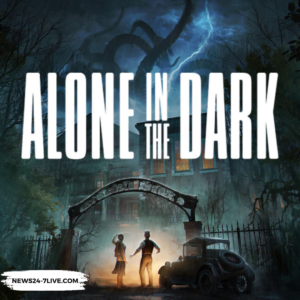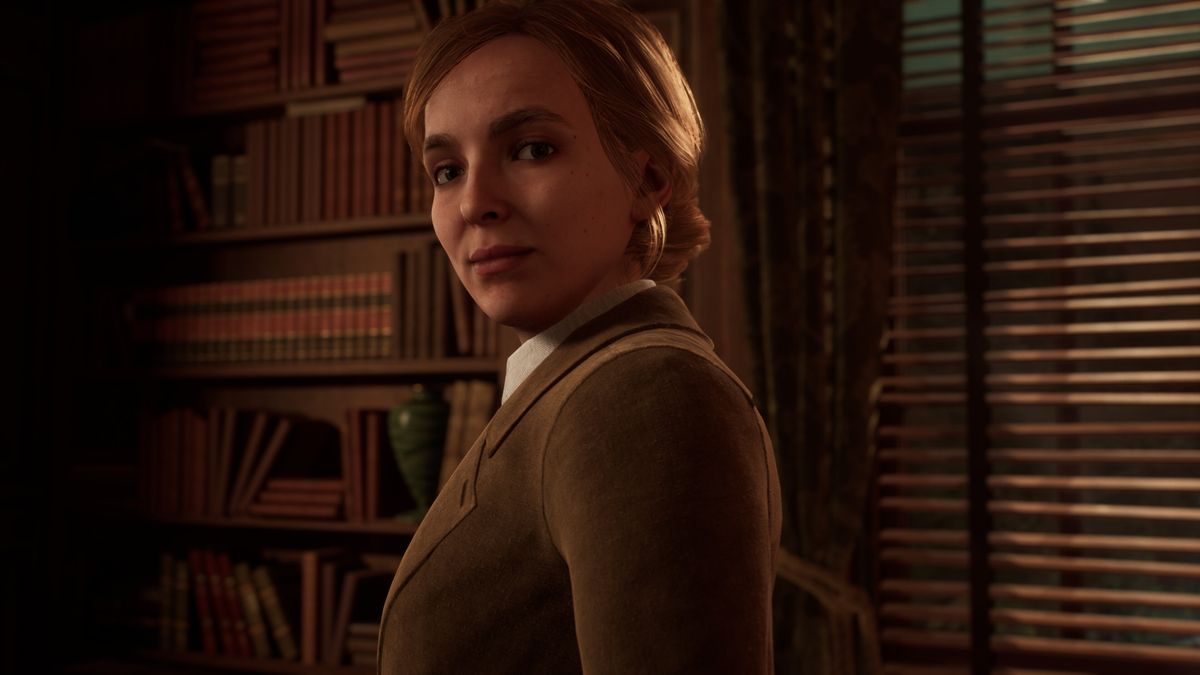Alone in the Dark, a franchise in the survival horror genre, makes a return with a reimagined version set in the early 20th century Louisiana. With Hollywood stars Jodie Comer and David Harbour taking the stage, expectations were high for this reboot.

Also Read: Sony PlayStation 5 Pro: 3x Faster GPU, With PSSR Support and More
Dating back to its inception in 1992, Alone in the Dark carved a path for iconic horror franchises like Resident Evil and Silent Hill.
The series has struggled to reclaim its former glory in recent years with missteps like the 2008 installment and the poorly received 2015 release, Illumination.
The reimagined Alone in the Dark plunges players into the eerie confines of Derceto Manor, a convalescence home with a dark history.
Players navigate through a blend of exploration, puzzle-solving, and combat, reminiscent of Capcom’s Resident Evil 2 remake.
The game offers two playable characters, Emily Hartwood and Edward Carnby, each with their own perspective on the unfolding mystery.
Reviews indicate mixed performances and lackluster writing plaguing the game. Comer’s portrayal of Emily Hartwood is criticized for inconsistency, while Harbour’s Edward Carnby receives more favorable albeit lukewarm reception.
The writing attempts a noirish tone but falls short struggling to reconcile with the game’s Lovecraftian themes. Alone in the Dark’s setting in 1920s Louisiana promises a southern gothic atmosphere ripe for horror.
While some reviewers praise its creepy ambiance and psychological scares, others find it lacking in genuine terror. The game’s sound design earns recognition for its contribution to building tension and immersion.
Combat and puzzle-solving mechanics are central to the gameplay experience, but reviews show issues with clunky controls and repetitive encounters.
Combat sequences, though scarce, provide brief moments of excitement, but are marred by AI glitches and sluggish movement. Puzzle-solving, while engaging at times, fails to consistently captivate players.
Also Read: Contra: Operation Galuga Review, Modern Reimagining of a Classic Franchise
One of the issues plaguing Alone in the Dark is its bugs and technical glitches. From floating objects to quest items disappearing and reappearing, players encounter numerous frustrations that detract from the overall experience.
Transporting players to the early 20th century Louisiana, Alone in the Dark thrusts them into the shoes of Emily Hartwood, on a quest to uncover the fate of her vanished uncle within the foreboding Derceto Manor.
Teaming up with the private detective Edward Carnby, players go on a journey through the labyrinthine corridors of the mansion, shrouded in an aura of malevolence and mystery.
Set against the backdrop of Lovecraftian lore, the game sets the stage for a narrative brimming with dread.
Central to the game’s allure are the performances of Jodie Comer and David Harbour, who breathe life into the roles of Emily Hartwood and Edward Carnby, respectively.
Comer’s portrayal of Hartwood’s determination adds depth to the character, while Harbour infuses Carnby with a stoic yet enigmatic demeanor.
Despite struggling with a script rife with tonal inconsistencies, both actors deliver compelling performances that anchor the narrative amidst its supernatural twists and turns.
Also Read: Legendary Manga Artist Akira Toriyama Dies at 68
Blending elements of exploration, puzzle-solving, and combat, Alone in the Dark presents players with a great gameplay experience.
Navigating the halls of Derceto Manor, players discover its secrets while contending with otherworldly adversaries.
The game’s resource scarcity and atmospheric tension imbue each encounter with a palpable sense of dread compelling players to tread cautiously in the face of looming threats.
From decrepit graveyards to war-torn trenches, each location is crafted to evoke a sense of unease and foreboding.
Complemented by a haunting jazz score, the game’s atmosphere immerses players in a world fraught with peril and intrigue.
While Alone in the Dark has strengths in its narrative depth and atmospheric design, it is not without its flaws.
The game’s writing struggles to maintain coherence, resulting in tonal inconsistencies that detract from the overall immersion.
Gameplay mechanics such as combat and puzzle-solving can feel disjointed at times, hampering the player experience.
Technical issues, including bugs and glitches, further undermine the game’s potential leaving some players frustrated with its execution.
Reviews for Alone in the Dark have been mixed, with critics applauding its atmospheric design and performances while critiquing its narrative execution and technical shortcomings.
The game offers a fresh take on the survival horror genre, paying homage to its roots while incorporating modern elements to captivate audiences.
Also Read: Skull and Bones Review: The Open-world Pirate Adventure



